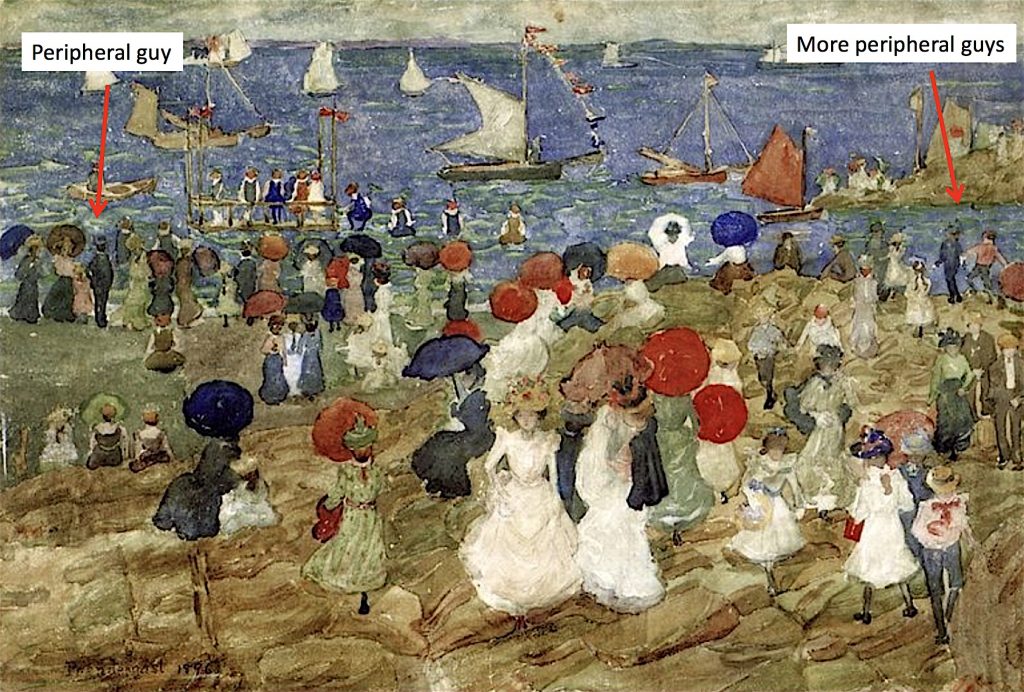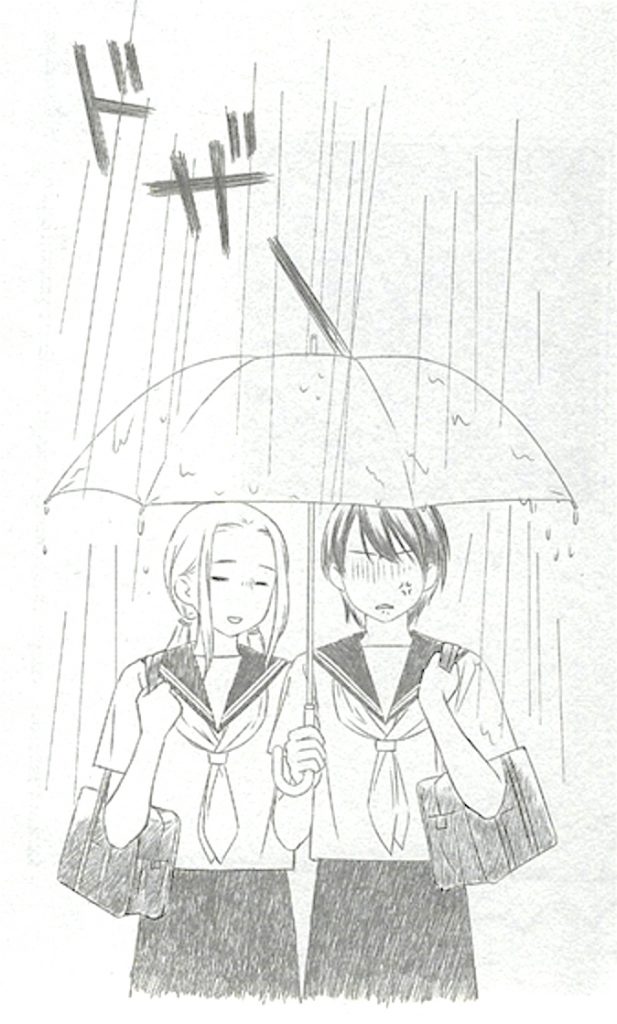 It’s Wednesday, and not to be all commercial-esque on you, you know what that means here on Okazu, yes? It’s Guest Review Wednesday! And today we have our dear friend and wonderful review writer, Bruce P with a review of a collection based on a “retro” Showa-style phone comic. So without further ado, here is Bruce to change the way we look at things. Just the way we like it. ^_^ Take it away Bruce!
It’s Wednesday, and not to be all commercial-esque on you, you know what that means here on Okazu, yes? It’s Guest Review Wednesday! And today we have our dear friend and wonderful review writer, Bruce P with a review of a collection based on a “retro” Showa-style phone comic. So without further ado, here is Bruce to change the way we look at things. Just the way we like it. ^_^ Take it away Bruce!
When observing the constant promenade of polite characters who flutter through Otome no Teniwoha (乙女のてにをは) Volume 2, by Luna-2 (ルナーツ), the paintings of Maurice Prendergast instantly come to mind. Prendergast. Honest, they do.
Maurice Prendergast (American impressionist/post-impressionist painter, ca. 1900) was a people person. That’s not a criticism, necessarily; people have their good points, some of them, on occasion. When not driving their pickups. But Prendergast just really, obsessively liked people. He squeezed as many as he could into his pictures, which are all crowds of tiny figures. At the beach, or in the park, or jammed into the Piazza San Marco in Venice, so many figures that ‘Where’s Waldo’ springs to mind, though that’s a bit unkind considering the cost of insuring the things. His figures look and act pretty much the same from one picture to the next: nicely dressed girls and women in fancy hats* caught in a sketchy snapshot enjoying random everyday activities. If men are present they remain fairly peripheral. And the women always, always carry umbrellas, or parasols. Not to go all Rachel Maddow here, but remember that point.
*Until he discovered Cezanne and Matisse, at which point the women stopped wearing fancy hats and nice clothes, or any clothes.

Nantasket Beach (1898)
Luna-2 is just as much a people person as Prendergast was. He similarly crowds an ever-changing cast of girls into his Otome no Teniwoha scenes. Boys are present, but they remain fairly peripheral. The stories are all short, eight-page snapshots of daily life, revolving around random everyday things like haircuts and cats and hairstyle malfunctions and more cats. Everything takes place in and around a single school, to judge by the uniforms, but no two stories have the same characters, and with only eight pages to make an impression the characters remain rather sketchy. Very slice-of-life, gently and politely humorous, and without any emotional connections between the briefly spotlighted characters.
So…what does any of this have to do with Yuri?
Nothing at all. And that’s why it’s here.
Because Otome no Teniwoha, Volume 2 has been highlighted in a recently published mook titled ‘Introduction to the World of Yuri’ (Yuri no Sekai – Nyuumon, 百合の世界入門). It’s highlighted as a Yuri series. It’s so highlighted that it gets a full page spread, with a bigger illustration than Fu-Fu and Asagao to Kase-san, and almost as big as Aoi Hana. This is all very peculiar, because the stories are completely devoid of Yuri. The characters are connected by nothing more than the fact that they go to school together. And though this does require that they stand next to each other now and again, they can usually keep even that under control. So how did this become a faux Yuri classic?
It’s that umbrella. The one on the cover. Two girls sharing an umbrella, how deeply romantic is that. Prendergast possibly would have thought so—his girls-and-umbrellas obsession is otherwise a little hard to explain. The ‘World of Yuri’ editor apparently thought so—or possibly he was confused, after a long night of editing, mistaking the cover for Morinaga Milk’s Girlfriends Volume 2. More likely and quite depressingly he may simply see any interactions between girls as Yuri. Because the tender umbral confines of the cover is as Yuri as it gets. In fact, while the cover illustration is derived from the first story, where Shuntoku-san and Sawaragi-san do end up sharing an umbrella, the illustration below shows Shuntoku-san’s actual emotion about having to do so. The difference in the illustrations is amusing. The one on the cover, of course, is the one that plugs the book, no doubt successfully (well, I bought it). And the one that also gets it included in peculiar Yuri guidebooks.

Ratings –
Art: 7. Not because the art is anything approaching stellar, but because the style suits the stories so very well. Pleasant, if slightly robotic, restrained, almost prim.
Story: 6. Lots of little ones. The ‘Teniwoha’ in the title refers to grammatical particles, the tiny syllables that scuttle underfoot indicating parts of speech, so you know there will be no epic themes here.
Characters: 7. Polite. Very polite. Never behind the wheel of some damn pickup.
Yuri: 0. Or almost 0. The closest any story gets is one in which a tall girl is told to partner with other girls for dance practice, making them blush and her sweat.
Service: 4. For those who like cats.
Overall: 7. For the thing it’s meant to be, it actually does a fine job. It’s just not in any way a Yuri thing.
Erica here: Well. THANK YOU for reviewing this Bruce. I have been putting off actually having to deal with Yuri no Sekai – Nyuumon, for this exact reason….it seemed very much a “pile of stuff the editor read” rather than, “Here are series you might possibly wish to know about if you are actually interested in Yuri.” And because of this very conflagration of “what editor-san liked” with “what is good” it sits there on the bottom of the pile, making a fine base for the pile of books I want to read. ^_^
I frankly, cannot cope with another “Intro to Yuri” that lacks any understanding of Yuri, nuanced or not. Part of why I am finally working on what has already become, in my head “that damned Yuri book.” I will say that, based on this review, “Showa retro” is a fairly accurate summation, however.
Thank you again, as always for your terrific perspective and for expanding our artistic vocabulary!
![]()


